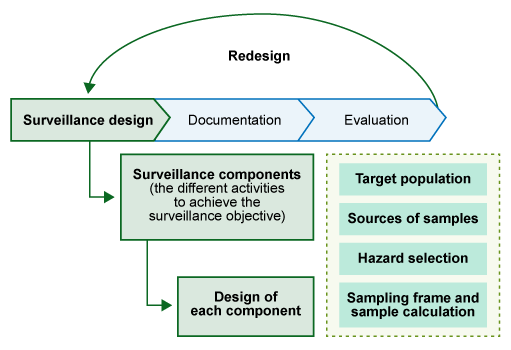4.1 Overview of surveillance design
We will start by looking at an overview of the key points that you need to consider when designing a surveillance strategy. These are outlined below, and in Figure 13:
- Surveillance purpose: Why do we need to do the surveillance? What is the overall aim?
- Surveillance system: What is the most appropriate type of surveillance system to use to achieve our surveillance purpose?
- Surveillance objective: What are the goals we need to achieve to meet the purpose of our surveillance?
- Surveillance components: What activities will our surveillance system include? (Elements for the design of a surveillance components are explained in Section 4.3.)
- Documentation: How will we document our surveillance system?
- Evaluation: How will we evaluate our surveillance system?
4 Design of surveillance and monitoring programmes




